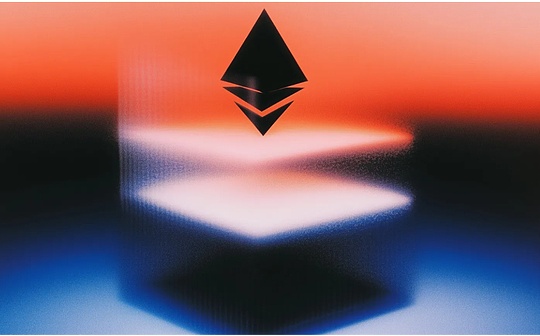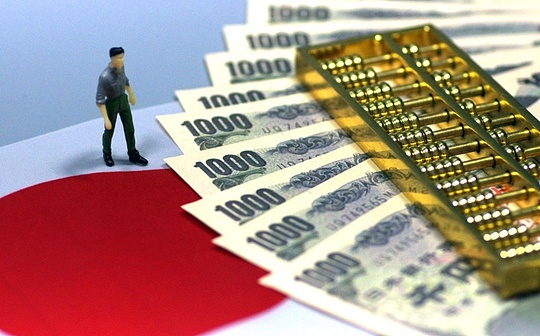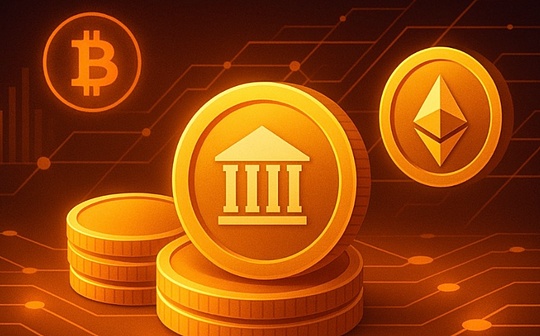
Next, Emily Parker, an advisor to China and Japan for the Global Blockchain Business Council, will be invited to give a speech on the stage. His topic is “2025 Web3 trends in the US and Asia”.
Emily Parker:Good morning everyone, I am very happy to be invited to meet you here. Thank you very much for visiting today’s event.
In my speech today, I hope to discuss some regulatory trends in different regions around the world, especially in the United States and Asia.Because there have been earth-shaking changes in regulation over the past year, I would like to explore the latest updates in the regulation of the United States and Asia-Pacific region.
Because we are in the United States ourselves, I believe everyone has also heard the topic that the United States has been discussing. The United States has entered a new era of Crypto, mainly with the new president coming to power.Because for many years, people have been criticizing the United States for being very unfriendly to Crypto, but the overall trend of the entire industry is that the overall environment in the United States has changed greatly, so here we have a very important question that we need to ask ourselves. To what extent these are just signals and to what extent are regulatory changes representing real-time (sound)? I think most people have no answers to such questions.So if you are here, I hope to show you some major events in the encryption field that are happening in the United States through this slide.
Among them, the first is that the chairman of the US Securities and Exchange Commission, Chairman Gary Gensler, has stepped down. The China Securities Regulatory Commission will usher in a new chairman. I believe many people know that the chairman of the US Securities and Exchange Commission, Gary Gensler, is not very popular in the Crypto world of the United States. He is regarded as tough on encryption methods and very tough in execution.
Second, SAB121 is also a very unpopular announcement, “Accounting Announcement No. 121”, which has now been abolished.
Third, the cryptocurrency working group has been established in the United States.
Now people are very excited about the so-called new era of crypto in the United States, and there are also a series of controversies, including the Meme coin launched by the president. Even those who work in the crypto industry are not very welcome to the President’s Meme coin, because to a certain extent, they are worried that retail investors will lose money, which is not conducive to the development of US cryptocurrencies.In addition, the United States also plans to set up a strategic crypto reserve, and some people have criticized this plan. The reason why many people don’t like this idea is that not only the reserves include only Bitcoin, which means it will be a strategic crypto reserve, but also some AltCoin. So many people are not very popular with this idea.
(As shown in the picture) This slide once again shows why the United States has received a lot of criticism. This is because many of the key points of all the cases initiated by the US Securities and Exchange Commission for Crypto industry or field are that the United States did not have clear regulations at the beginning, but on the contrary, it replaced regulation with law enforcement, but this situation is changing now.
For example, many law enforcement actions such as Ripple, Coinbase, Consensys, Cumberland, Kraken, etc. have been revoked, but this only cancels some cases, which does not mean that the entire supervision will change in all aspects.
As I said, Hong Kong has a very complete regulatory framework. Everyone knows that the discussion in Hong Kong is about how to balance supervision and development. Don’t be too strict for enterprises. Hong Kong has done a very good job in this.There have been many changes since last year. There were 2 licensed companies in the past, but now there are nearly 10 companies.I have also heard of the roadmap and everyone is very optimistic.HashKey is the organizer of today and has been talking about fund projects, and there will be many very interesting developments in Hong Kong.At the same time, there is also the tax exemption of cryptocurrencies, which has many situations for family office private equity funds and hedge funds. I believe everyone will know better than me. These are some of the major changes I have noticed.
Stablecoins are a big event. Even if everyone knows that stablecoins are not a big market, there are not many legislative areas, and many regions have legislation on stablecoins.In December, a draft bill for stablecoin will be submitted to the Legislative Council, and there will be sandboxes and other arrangements. The Legislative Council for Hong Kong’s stablecoin will be issued soon, but it is not known the exact time. It may be May and may be implemented in September.The next third and fourth quarter will see the first batch of regulated stablecoins issued in Hong Kong.
The Hong Kong stablecoin draft is very thoughtful and requires comprehensive reserves to be retained in the form of legal asset reserves.At the same time, there are also some regulations, such as high quality and high liquidity of legal asset coins, which are very important. All regulatory authorities are thinking that they do not want stablecoins to be operated purely by banks. If there is no 100% reserve or there is no very good profit margin behind this, this is actually a very big problem. This is why Hong Kong and other regions are doing these supervisions.
Japan is very interesting. Like Hong Kong, digital assets are very welcome and very strict.The Japanese government and regulators are very welcome to crypto assets, and they are also discussing Web3 a lot, hoping to make Japan the core area of Web3.Why are there no more news in Japan?The answer is very simple, it is tax.Japan’s tax is a big problem. Now the crypto tax may be as high as 55%, which is very difficult. It is very difficult to enter places like Japan, Hong Kong, Singapore, and Dubai. Now there are discussions on tax cuts, reducing them to nearly 20%. This is a big change, and it is a change that will open up the world for Japan.At the same time, we are also discussing the possibility that crypto ETFs may become possible. These changes are being promoted very actively, and I will continue to pay attention to the tax issue.
Japan is actually the first major economy to introduce stablecoin regulations, and it has been a while since these regulations are very, very strict and very rigid.For example, USDC has been launched in Japan, which is a big event. Finally, we have seen Japan’s legislation and supervision bear fruit.Another news is also very interesting to everyone, that is, the Japanese exchange Coincheck was listed on the Nasdaq stock market in December.In the United States, few exchanges are listed, and they are basically based on currency. For example, listings such as Coinbase and Coincheck are very referenceative for the globalization of Japanese exchanges. At the same time, Sony is a very interesting trend, which is also an example of large Japanese companies entering the crypto circle.
Next, let’s talk about Old Money. This issue will also be discussed in the following roundtable discussion, but their money is not an crypto asset, but may be a bank asset. In tokenization and real-world assets, many banks have discussed tokenization.
Let me explain some numbers to you. It is basically the situation in the United States. In fact, it is also developing in Asia, and it is better to accumulate.For example, JPMorgan Chase, Goldman Sachs, Barclays, etc. spent a lot of attention and money in the crypto circle. The big problem was that they had to look at the tokenization of RWA back then, but were these really encrypted?This allows you to understand what kind of operation is for encryption.
Next is a very important trend. Everyone knows that listed companies also use Bitcoin as asset reserves and hold Bitcoin. This is an opportunity for many atypical traders to enter the Bitcoin world, such as pensions, and many ordinary traders are unwilling or afraid to buy Bitcoin directly for many reasons. Now they can use micro-strategy/strategy as leaders in proxy holding and reinvestment, which is a very important investment development.
Let’s talk about it a little more. We can see that the largest institutional shareholders all use some institutions, such as micro-strategy, which is like buying stocks. This is an investment method they are more familiar with.Obviously, micro-strategy is a very interesting stock. It was a bloody red in the US stock market this Friday and did not do well.But in this case, micro-strategy still rises against the trend and can stand out in the stock market. Bitcoin can become a risk hedging asset. Now micro-strategy is a softer company, not so technical, it is the role of Bitcoin preservation library, and it is very highly dependent on Bitcoin.
If everyone has micro-strategy, they will better understand the so-called collapse and price decline of Bitcoin.
Also, why is there a premium here?Some people may say that there is such a solution, and everyone will think that this is a fantasy, macro policies, etc.Another point is health?There is a company that accounts for such a large proportion.Going back to the previous data, is it appropriate for a company to hold so many Bitcoins?Because Bitcoin itself should be decentralized.In addition, everyone is asking, micro-strategy is a very complex company. It is a very clever company with a very complex financial structure to hedge risks. Many micro-strategy imitators do not have as good control over risk as micro-strategy/strategy companies themselves.
This is some information I have shared with you today. I wonder if this will happen in Asia. For example, listed companies will also hold Bitcoin assets, providing more opportunities for pre-crypto capital.
I am very happy to come to Hong Kong again, thank you for listening!








